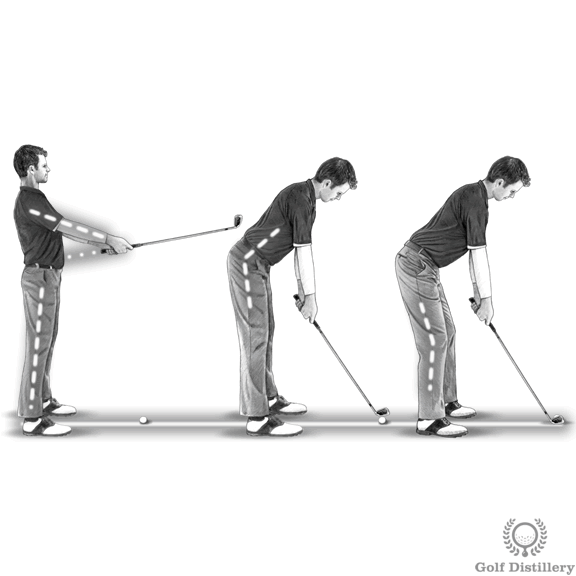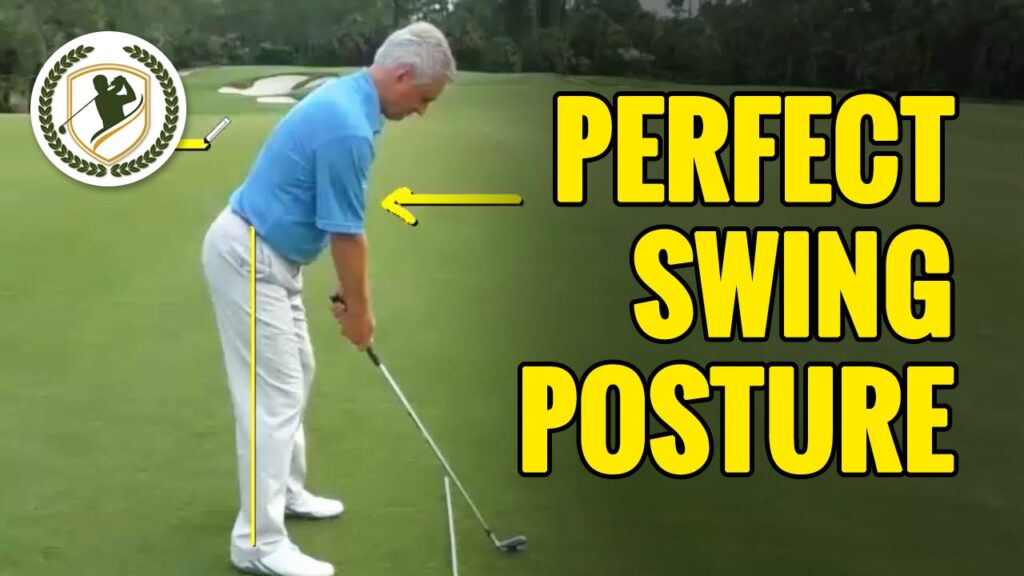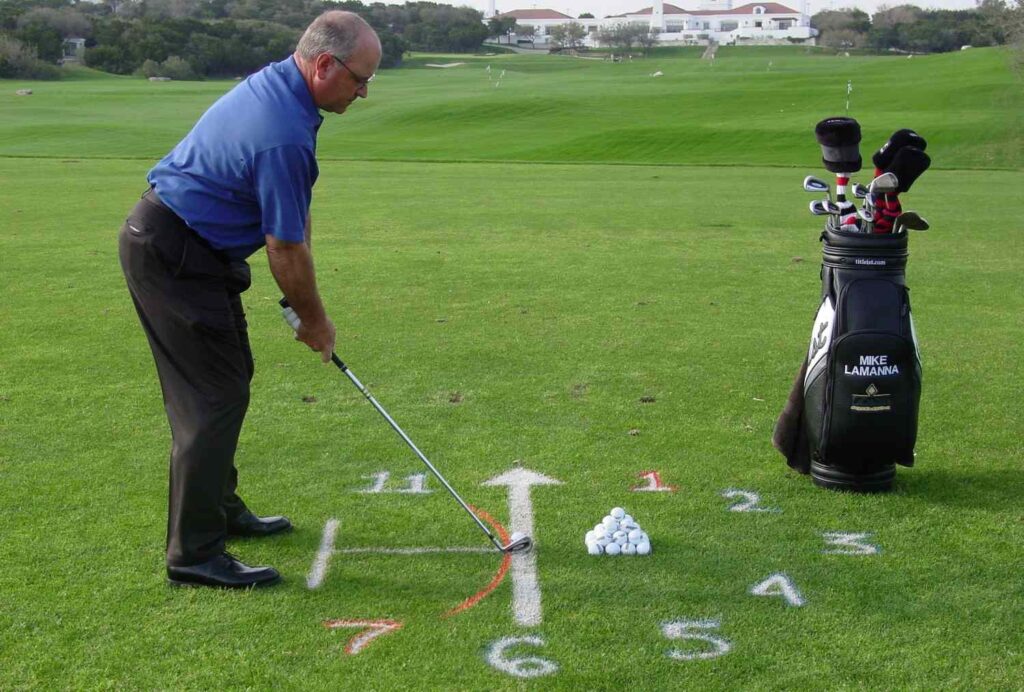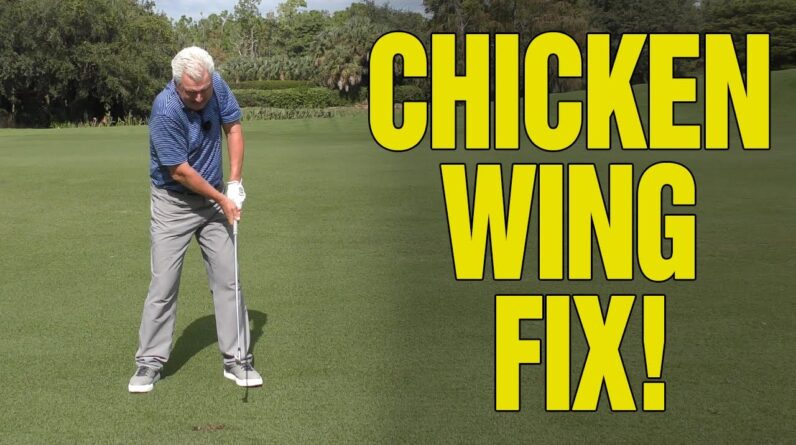Picture yourself on a beautiful green golf course, the sun shining down as you grip your club with anticipation. But before you send that first satisfying swing, have you ever wondered, “What is the correct posture for a good golf swing?” It’s a question that plagues many beginners and can make or break your game. In this article, we will explore the importance of proper posture in achieving a powerful and accurate golf swing, unlocking the secrets to improving your performance on the course. So, grab your clubs and let’s dive into the world of perfecting your golf posture.

Importance of Posture in Golf
Why is posture important in golf?
Posture is a fundamental aspect of any golfer’s game, as it plays a crucial role in the execution of a successful swing. It affects every aspect of your swing, from the address to the follow-through. Having proper posture helps you achieve a balanced, stable position, leading to improved accuracy, consistency, and power. It allows for a more efficient transfer of energy from your body to the club, resulting in better contact with the ball.
How does posture affect the golf swing?
Posture and the golf swing go hand in hand. A correct and consistent posture ensures that your body is aligned properly, allowing for a more efficient transfer of energy throughout your swing. It affects how well you can rotate your upper body, maintain balance, and control the path of your swing. Without proper posture, you may struggle with accuracy, distance, and overall swing mechanics.
The relationship between posture and power in the swing
Posture plays a critical role in generating power in the golf swing. A solid and balanced posture allows you to effectively engage your core muscles and generate torque, which is essential for generating clubhead speed. When your entire body is in alignment, it creates a strong foundation to transfer power from your legs to your upper body. With proper posture, you can maximize your swing speed, resulting in more distance off the tee and greater control over your shots.
Key Elements of a Good Posture
Alignment and setup
Alignment and setup are crucial components of a good posture. To achieve proper alignment, start by positioning yourself parallel to the target line. The feet should be shoulder-width apart, and the knees should be slightly flexed. Your body weight should be evenly distributed between both feet.
Spine angle
Maintaining a correct spine angle throughout your swing is vital. A slight tilt of the spine away from the target at address helps promote a proper swing plane. Avoid excessively rounding or arching your back, as it can lead to inconsistencies in your swing and reduce power generation.
Knee flex
Proper knee flex is necessary for balance and stability. Bend your knees slightly, without overdoing it. This flexion allows you to engage your leg muscles and maintain a solid foundation during your swing.
Shoulder tilt
Having the correct shoulder tilt aids in proper club positioning and promotes a square impact with the ball. Tilt your lead shoulder slightly downwards at address, ensuring both shoulders are parallel to the target line.
Balance and weight distribution
Maintaining balance and even weight distribution is essential for a solid golf swing. Avoid leaning too far forward or backward, as it can disrupt your swing mechanics. Keep your weight centered and evenly distributed between both feet throughout your swing for optimal stability and control.
Addressing the Ball
Proper clubhead position
When addressing the ball, it is crucial to position the clubhead correctly to enable a fluid and efficient swing. The clubhead should be hovering just above the ground behind the ball, ready to strike it at impact. Avoid burying the clubhead into the turf or hovering too far above the ball, as it can affect your swing plane and contact.
Grip pressure
Maintaining a proper grip pressure is essential for a good posture during the swing. Grip the club firmly enough to maintain control, but avoid gripping it too tightly, as it may hinder the smoothness of your swing and limit your wrist hinge. Find the right balance of grip pressure that allows for a relaxed and fluid motion throughout your swing.
Foot placement and alignment
Proper foot placement and alignment are critical for stability and control. Position your feet shoulder-width apart, with toes pointing slightly outward. Align your feet parallel to the target line to ensure proper alignment throughout your swing. This setup facilitates a more natural rotation of the hips and a consistent swing path.
Addressing the Target
Aiming at the target
When addressing the target, it is crucial to have a clear visual of your intended target line. Align your body and clubface towards the target, ensuring your shoulders, hips, and feet are parallel to the desired line. This alignment improves your chances of hitting the ball towards the intended target and helps eliminate unintentional slices or hooks.
Aligning body with target line
In addition to aiming at the target, aligning your body with the target line is equally important. Make sure your shoulders, hips, and feet are all parallel to the target line. This alignment promotes a more efficient swing path and enables you to swing through the ball with greater accuracy and consistency.

Backswing Posture
Maintaining spine angle
During the backswing, it is crucial to maintain the correct spine angle to ensure proper rotation and balance. Avoid tilting or swaying your upper body excessively, as it can lead to inconsistent strikes and loss of power. Keep your spine angle consistent throughout the backswing for a fluid and controlled motion.
Shoulder turn
A proper shoulder turn is essential for generating power and maintaining swing consistency. As you rotate your shoulders away from the target during the backswing, ensure that your lead shoulder turns under your chin. This turn helps create torque and allows for a more powerful downswing and impact.
Proper hip rotation
Alongside shoulder turn, proper hip rotation is crucial for a successful backswing. As you rotate your shoulders, allow your hips to naturally turn along with them. This synchronized rotation helps create torque and generates power. Avoid excessive lateral movement or sliding during the backswing, as it can lead to inconsistencies in your swing path.
Maintaining balance
Throughout the backswing, it is essential to maintain balance. Avoid swaying or shifting your weight too much from side to side, as it can disrupt your swing tempo and timing. Focus on maintaining a stable foundation and evenly distributing your weight between both feet to ensure a controlled and balanced backswing.
Downswing and Impact
Transition from backswing to downswing
The transition from the backswing to the downswing is a crucial moment in the golf swing. Maintain the proper sequence of movements as you initiate the downswing. Start by shifting your weight from your back foot to your front foot, allowing for a smooth transfer of power. Keep your upper body rotation in sync with your lower body movement to maintain a proper swing path.
Proper weight transfer
Generating power and maximizing distance relies heavily on proper weight transfer during the downswing. As you transition from the backswing, transfer your weight onto your front foot, ensuring a more efficient transfer of energy from the ground up. This weight transfer creates a powerful and controlled strike at impact, resulting in solid ball contact and increased distance.
Maintaining posture at impact
Maintaining proper posture at impact is critical for consistent and accurate ball striking. Ensure that your spine angle remains intact, your shoulders are aligned with the target line, and your arms are fully extended. By maintaining a correct posture at impact, you can optimize the transfer of energy to the ball and achieve more consistent ball flight.

Follow Through
Extension of the spine
A proper follow-through includes the extension of the spine, which demonstrates a well-executed swing. After striking the ball, extend your spine fully to a comfortable and natural position. This extension promotes a full range of motion, helps prevent unnecessary tension, and sets you up for a balanced finish.
Balanced finish
A balanced finish is a strong indicator of a good swing and proper posture throughout. After completing your swing, hold a well-balanced finish with your body weight on your front foot, your chest facing the target, and your arms extended. This balanced finish signifies that you maintained your posture and executed the swing with control and stability.
Importance of maintaining posture until finish
It is crucial to maintain your posture from the address to the follow-through. By maintaining proper posture until the finish, you ensure a consistent swing path, control over the clubface, and optimal ball contact. Slumping or losing posture prematurely can lead to poor shots and inconsistent ball flight. Focus on staying balanced and maintaining a solid posture until the completion of your swing.
Common Posture Mistakes
Swaying
Swaying is a common mistake that can negatively impact your posture and swing mechanics. Swaying refers to excessive lateral movement of the body during the swing, usually caused by improper weight distribution. It can lead to inconsistent strikes, loss of power, and poor balance. Focus on maintaining a stable base and avoiding excessive side-to-side movement.
Slouching
Slouching is another common posture mistake that can hinder your swing. Slouching refers to rounding of the upper back and shoulders, which can restrict rotation and reduce power generation. Maintain a neutral spine position and avoid slouching to allow for a more efficient and powerful swing.
Reverse spine angle
A reverse spine angle occurs when your spine tilts towards the target during the backswing. This position can lead to inconsistencies, loss of power, and potential injury. Maintain a proper spine tilt away from the target to promote a more natural and effective swing path.
Limited rotation
Limited rotation, often caused by insufficient flexibility or poor posture, can restrict your swing and impede power generation. Work on improving your flexibility through targeted exercises and drills to allow for a full range of motion and optimal rotation throughout your swing.

Exercises to Improve Posture
Core strengthening exercises
Building a strong core is essential for maintaining proper posture throughout your golf swing. Engaging your core muscles provides stability and increases power generation. Incorporate exercises such as planks, Russian twists, and medicine ball rotations into your fitness routine to strengthen your core and improve your golf posture.
Flexibility training
Flexibility plays a crucial role in achieving and maintaining good golf posture. Incorporate stretching exercises into your routine to improve flexibility in key areas such as the hips, shoulders, and spine. Focus on exercises such as hip stretches, shoulder rotations, and spinal twists to enhance your overall range of motion and promote better posture.
Posture drills
Practice specific posture drills to reinforce proper positioning and alignment. These drills can include mirror work, where you observe and correct your posture in front of a mirror, or using alignment aids to ensure your body is in the correct position. Consistent practice of these drills will help develop muscle memory and reinforce good posture habits.
Conclusion
The role of proper posture in a good golf swing cannot be overstated. It is the foundation upon which every successful swing is built. By prioritizing and practicing good posture, you can significantly improve the consistency and accuracy of your shots, as well as increase your power and distance off the tee.
The benefits of maintaining correct posture are numerous. It allows for a more efficient transfer of energy, leading to increased clubhead speed and better ball contact. Proper posture promotes a more fluid swing, reduces the risk of injury, and enhances overall swing mechanics. With practice and repetition, you can improve your posture and, subsequently, your golf game.
Remember, developing good posture takes time and effort. Incorporate the key elements of a good posture into your setup and address the ball with precision. Work on maintaining correct posture throughout your swing, focusing on the backswing, downswing, and follow-through. Avoid common posture mistakes and incorporate exercises and drills to improve your posture and reinforce good habits.
With dedication and a focus on maintaining proper posture, you will undoubtedly see improvements in your golf swing and overall performance. So, stand tall, address the ball with confidence, and swing away with the power and control that comes from having a good golf posture. Happy golfing!







